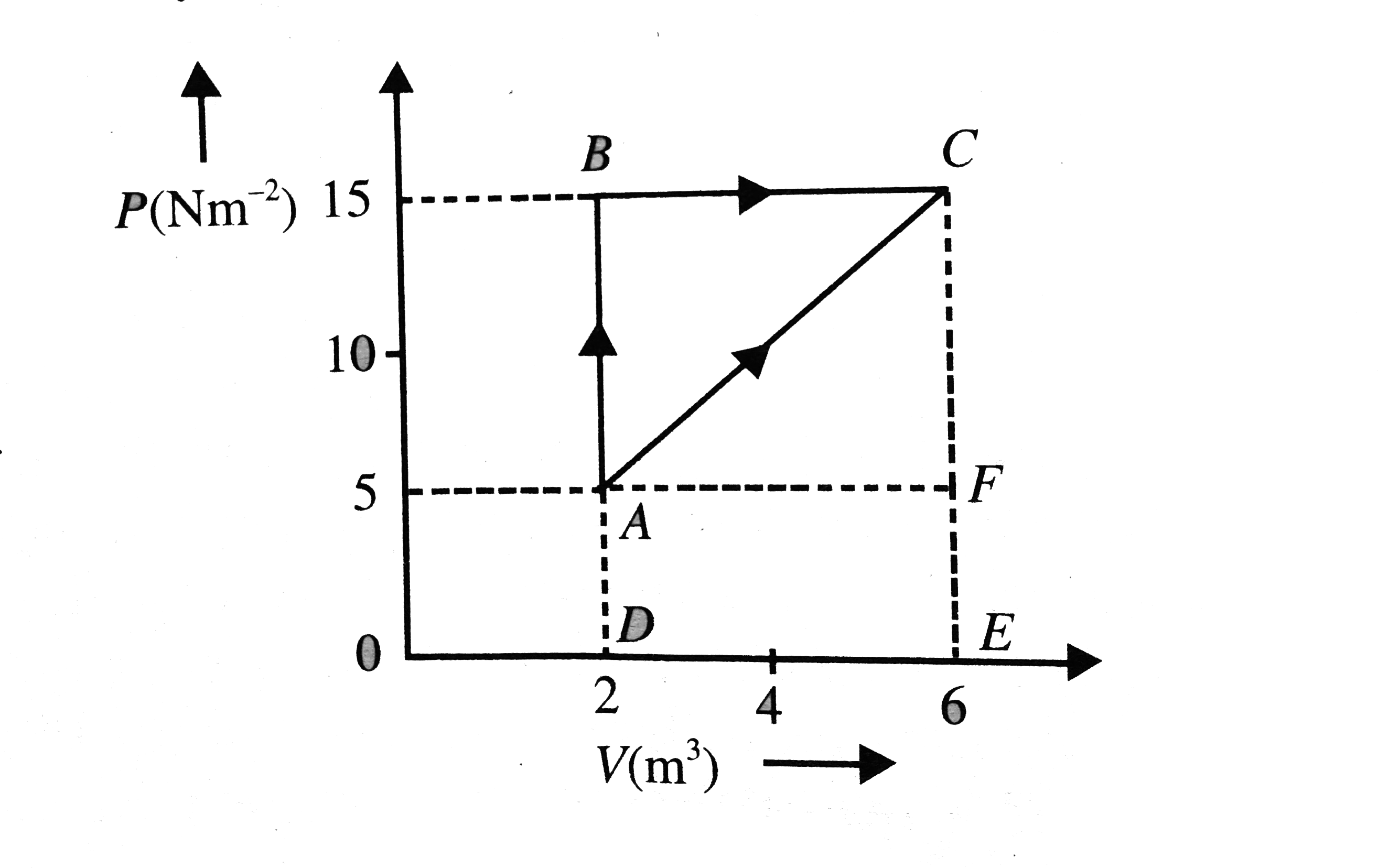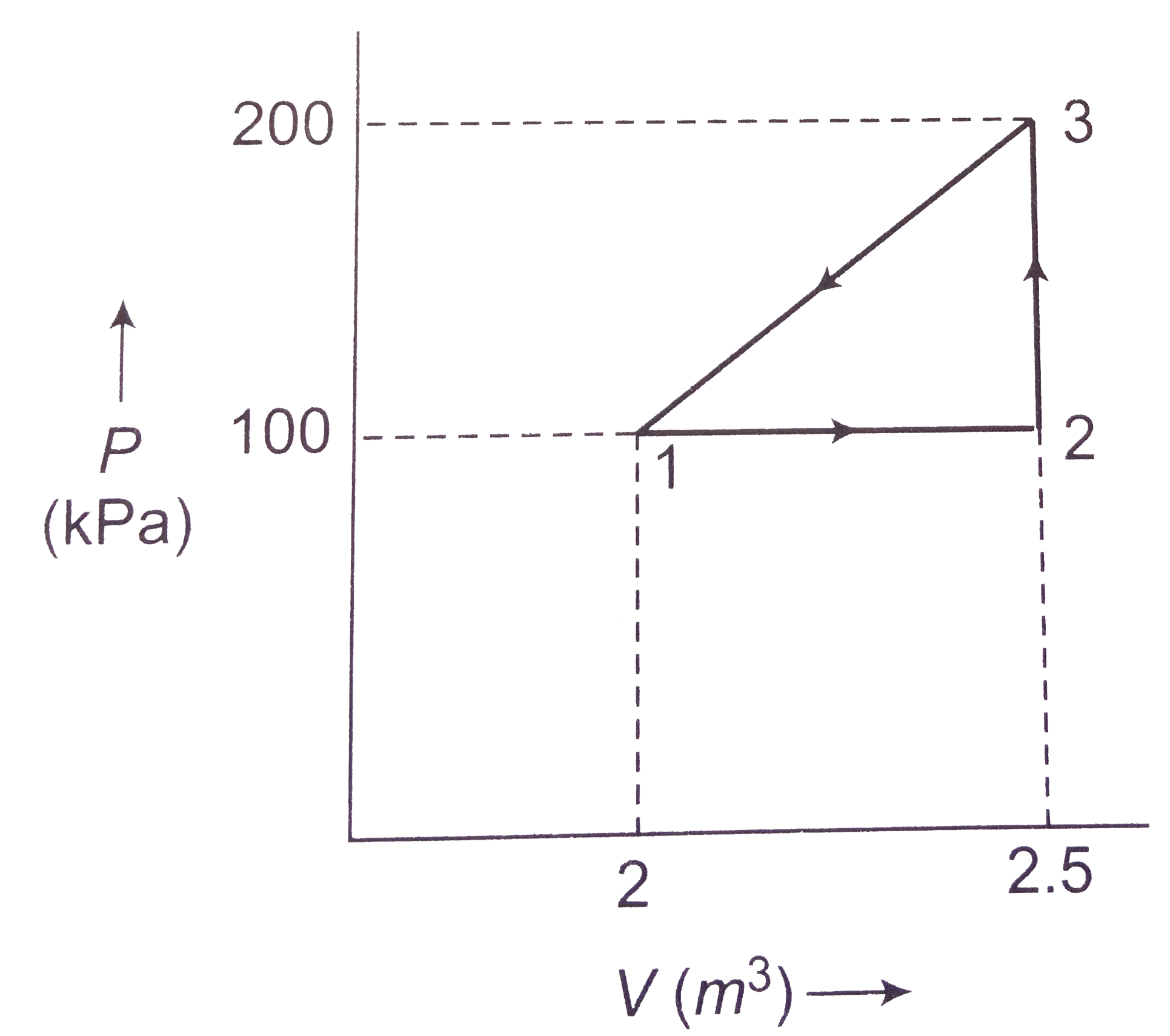calculate the change in internal energy of a gas kept in a rigid container when 100 J of heat is supplied to it.
The correct Answer is:A
Here, Q=100J
Weknow,DeltaU=DeltaQ-DeltaW
Here, since the container is rigid,<br>(DeltaV)=0<br> Hence the ΔW=PΔV=0
So,DeltaU=DeltaQ=100 J.
Topper's Solved these Questions
- LAWS OF THERMODYNAMICSBOOK - HC VERMACHAPTER - LAWS OF THERMODYNAMICSEXERCISE - Short Answer
15 Videos
- LAWS OF THERMODYNAMICSBOOK - HC VERMACHAPTER - LAWS OF THERMODYNAMICSEXERCISE - Objective 2
5 Videos
- KINETIC THEORY OF GASESBOOK - HC VERMACHAPTER - KINETIC THEORY OF GASESEXERCISE - Exercises
62 Videos
- NEWTON'S LAWS OF MOTIONBOOK - HC VERMACHAPTER - NEWTON'S LAWS OF MOTIONEXERCISE - Exercises
42 Videos
Similar Questions
(a) An ideal gas contained in a cylinder is given 200 J of heat. The gas does 60 J of work in the expansion resulting from heating. Calculate the increase in internal energy in the process.
(b) Calculate the change in internal energy of a gas kept in a rigid container when 150 J of heat is supplied to it.
View SolutionThe change in internal energy of a gas kept in a closed container when 50 cal heat is supplied to it is
View Solution
Knowledge Check
The change in internal energy of a gas kept in a rigid cylinder on supplying 120 J of heat is
A0 JB60 JC100 JD120 JCalculate the increase in internal energy of system when 40 joule heat is supplied and the work done by a system is 8 joule
A25 JB30 JC32 JD28 JAn ideal gas of one mole is kept in a rigid container of negligible heat capacity. If 25J of heat is supplied the gas temperature raises by 2∘C. Then the gas may be
AheliumBargonCoxygenDcarbon dioxide
Calculate the changes in internal energy of a system if,
300 J of heat energy is added to the system and a work of 160 J is done on the system.
View SolutionCalculate the external workdone by the system in Kcal, when 40 Kcal of heat is supplied to the system and internal energy rises by 8400J.
View SolutionFigure. Shows an ideal gas changing its state A to state C by two different path ABC and AC.
a. Find the path along which the work done is the least.
b. The internal energy of the gas at A is 10J and the amount of heat supplied to change its state to C through the path AC is 200J. Find the internal energy at C.
c. The internal energy of the gas at state B is 20J. Find the amount of heat supplied to the gas to go from state A to state B.

View Solution
In the figure an ideal gas changes is state from state A to state C by two paths ABC and AC.
(a) Find the path along which the work done is least.
(b) The internal energy of the gas at A is 10 J and the amount of heat supplied to change its state to C through the path AC is 200 J. Calculate the internal energy at C.
(c) The internal energy of the gas at state B is 20 J. Fid the amount of the heat supplied to gas to go from A to B.
View SolutionIn the given figure, an ideal gas changes it state from A to state C by two paths ABC and AC.
(i) Find the path along which work done is the least.
(ii) The internal energy of the gas at A to 10J and the amount of heat supplied to change its state to C through the path AC is 200J. Calculate the internal energy at C.
(iii) The internal energy of the gas at state B is 30J. Find the amount of heat supplied to the gas to go from A→B.

View Solution
